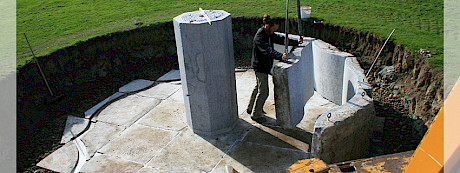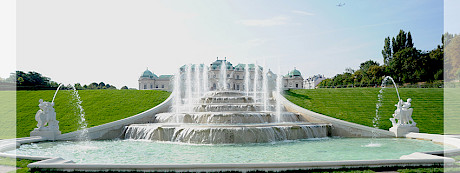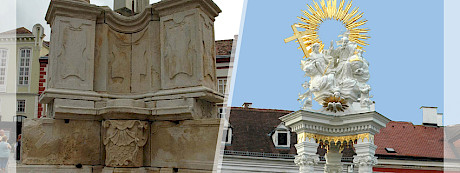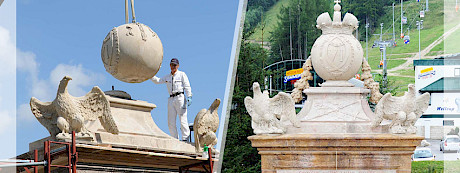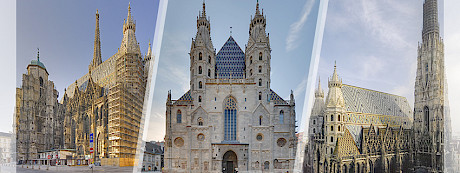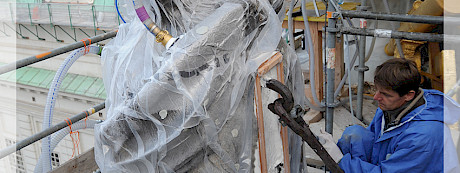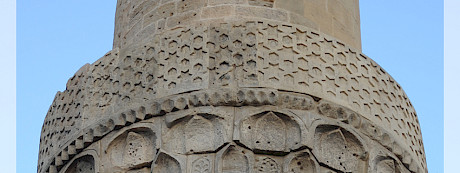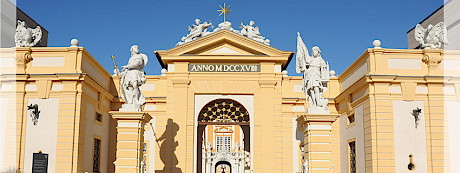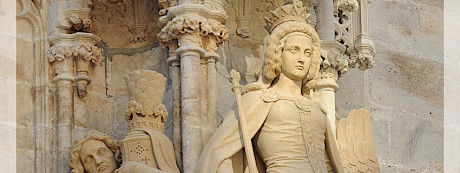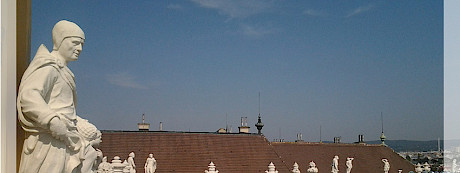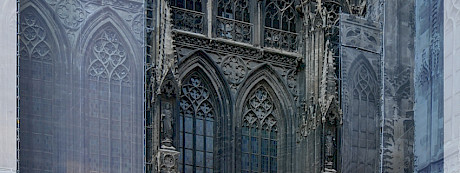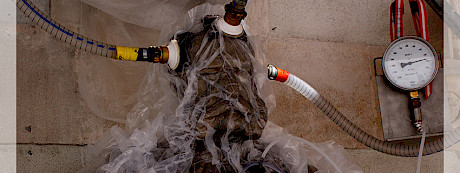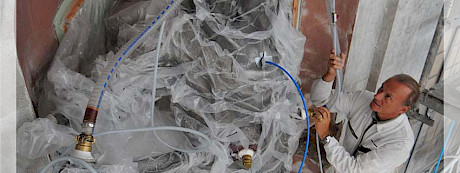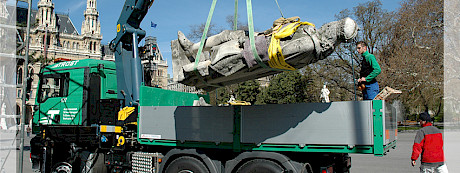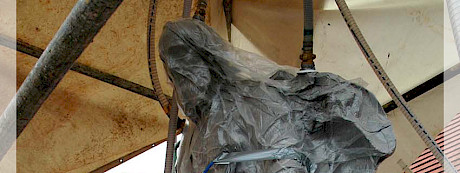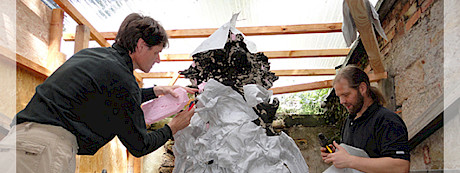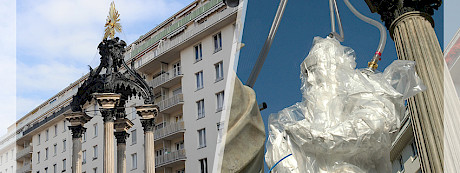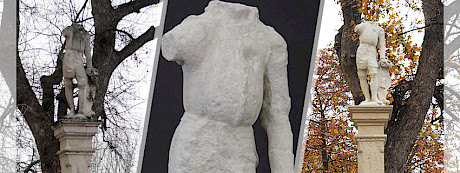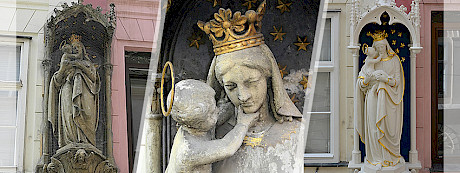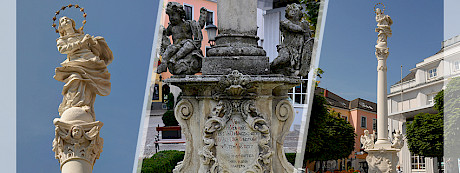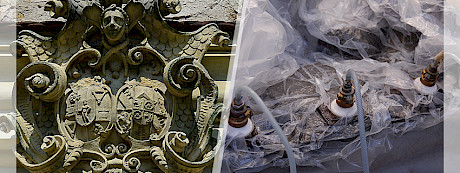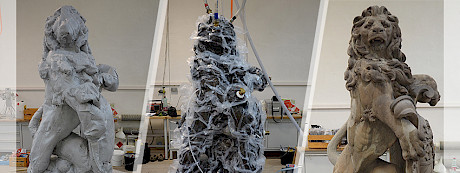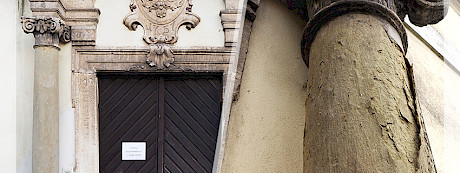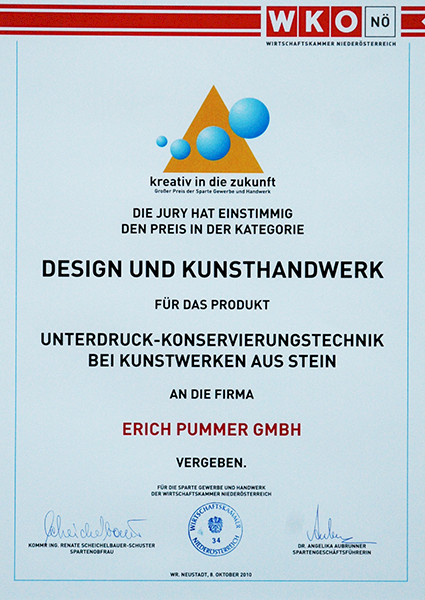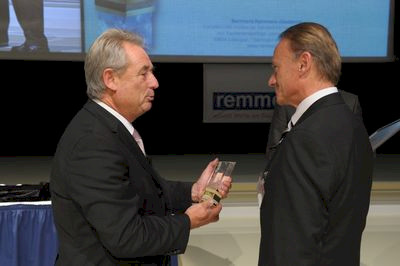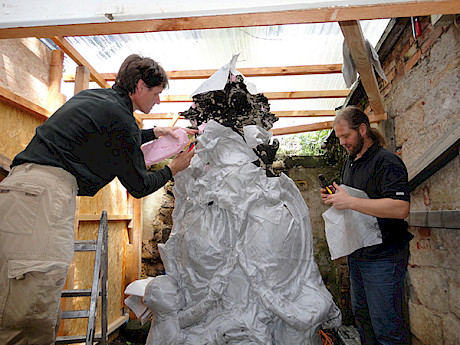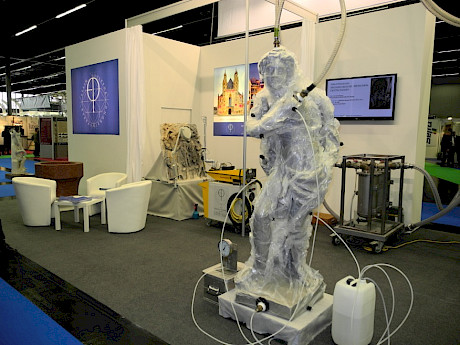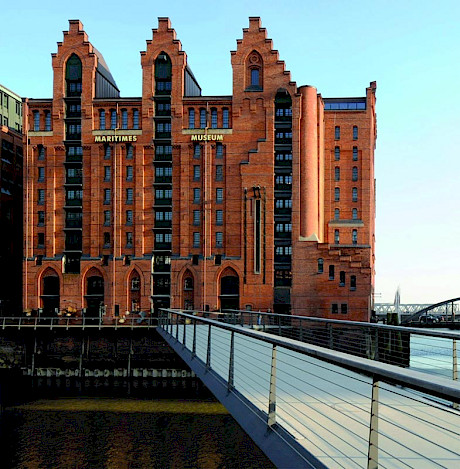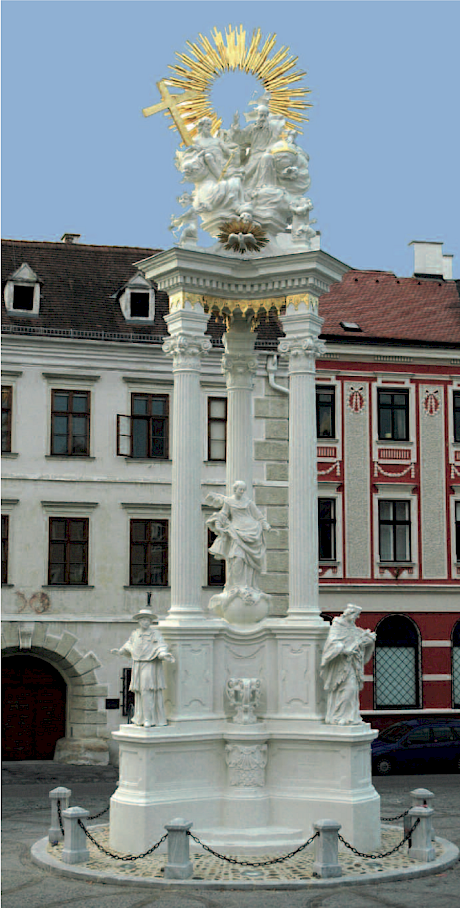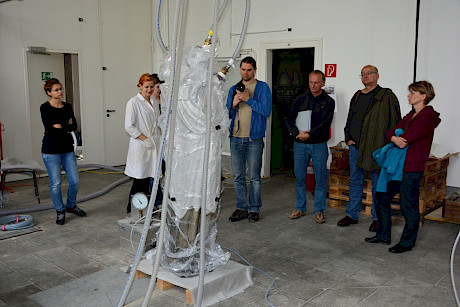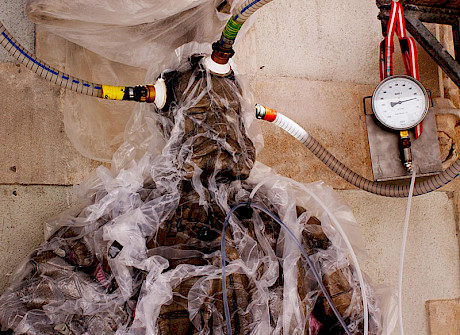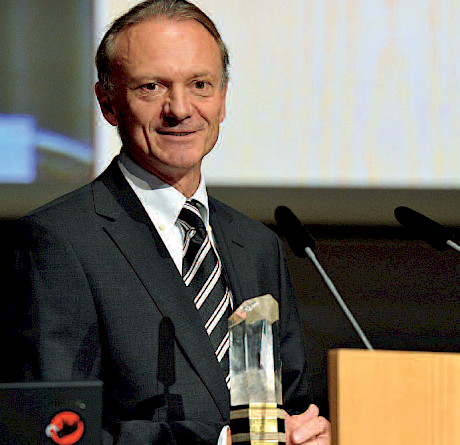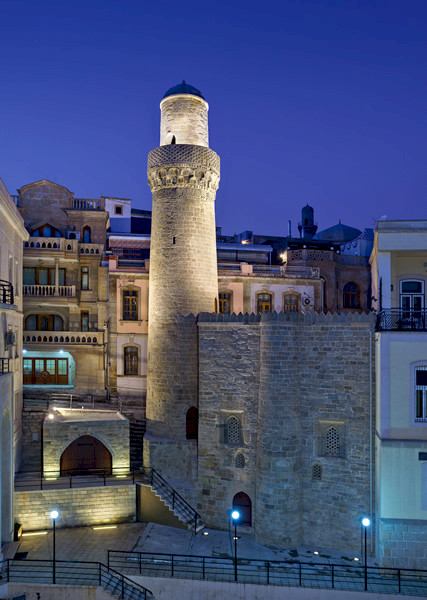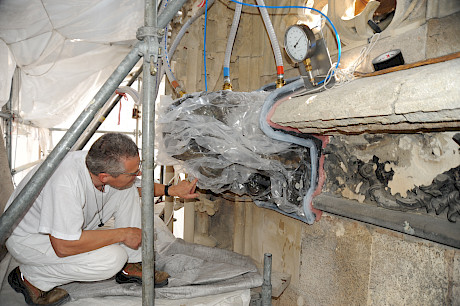Vacuum Conservation Method
Stone conservation is necessary in order to stop the degradation of masonry that limestone and sandstone monuments are particularly at risk of due to frost and acid rain.
The patented "vacuum-circling strengthening process" (Europa Patent Erich Pummer GmbH no. 1295859) allows monuments, stone sculptures, facades and other free-standing and weathered objects to be preserved either in-situ or in the workshop.
Thanks to this technology, a basic principle that has been sought in stone conservation for decades can be realised: namely, that the right quantity of new bonding agent is applied to the damaged object and, above all, is injected deep into the stone. This is fundamentally important since simple surface treatment can cause the sort of follow-up damage that is all too widely seen. This damage includes cavities of just a few millimetres that become chipped after a few years, causing parts of the original surfaces of the artwork to be irreparably lost. The objects to be treated, which can be virtually of any size, are shrink-wrapped in airtight solvent-resistant film. The remaining air trapped inside the film and within the porous cavities of the stone is then drawn out with the vacuum-circling preserver so that a vacuum is created in the object itself. After a relative vacuum of 300–900 mb has been achieved, the appropriate strengthening agent (silicic-acid ester or acrylic solution) is injected via a precise dosing system, and distributed evenly and deeply into the stone thanks to the low pressure. The open pores and badly damaged areas are filled first, while the remaining pores and capillaries in the healthy and sound material take slightly longer to fill until, finally, the stone has been restored back to its even and original strength.
Effective and efficient demineralisation can be achieved using the same techniques by rinsing with demineralised water. More information in the article: "The cleaning power of water"
This conservation method is already widely accepted throughout Europe by scientists and monument conservationists. Our work has taken us beyond Austria into Germany, Croatia, Hungary and even Azerbaijan.
Videos
Related projects
Related articles
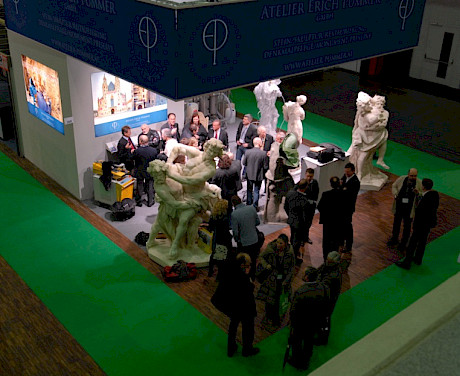
"Monumento Salzburg 2012"
08/03/2012
Successful start for Monumento 2012 The first trade fair for conservation of historic monuments in Salzburg For three days, the spirit of times long passed imbued the halls of Messezentrum Salzburg. Experts and enthusiasts of historical artifacts enjoyed the opportunity to explore the…
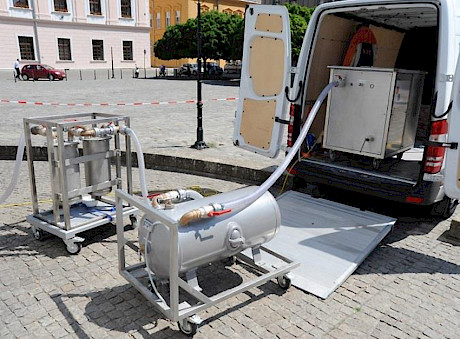
Vacuum-Circling Process: A Innovative Stone Conservation Method
06/09/2016 - 10/09/2016
Science and Art: A Future for Stone: Proceeding of the 13th International Congress on the Deterioration and Conservation of Stone, Volume 2. Paisley: University of the West of Scotland. S. 931ff; by Erich Pummer

Application of Ethyl Silicate Based Consolidants on Sandstone with Partial Vacuum: A Laboratory Study
06/09/2016 - 10/09/2016
Science and Art: A Future for Stone: Proceeding of the 13th International Congress on the Deterioration and Conservation of Stone, Volume 2. Paisley: University of the West of Scotland. S. 955ff; by H. Siedel, J. Wichert and T. Frühwirt
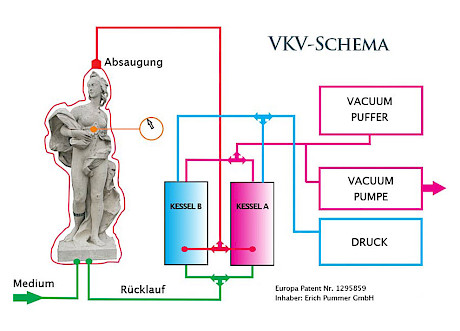
Consolidate with vacuum
01/10/2007 - 01/10/2013
Consolidation of natural stone always goes back to one question: How do you transport the consolidant agent into the depth of the stone? New perspectives are opened by a vacuum-circuit process by which first practice experiences have already been gained. by Erich Pummer
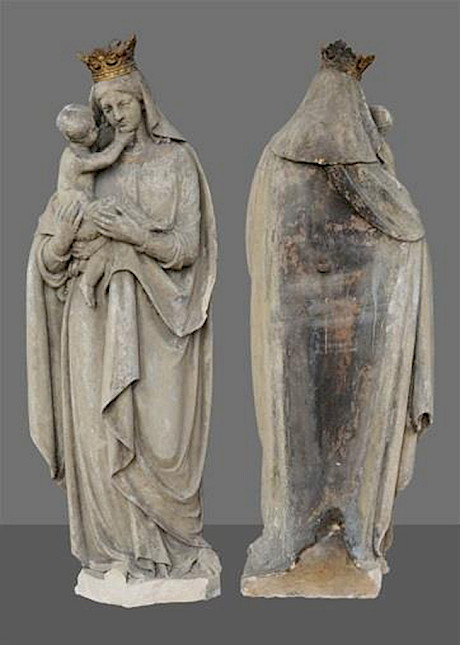
Ethyl-silicate Consolidation for Porous Limestone Coated with Oil Paint – A Comparison of Application Methods
06/09/2016 - 10/09/2016
Science and Art: A Future for Stone: Proceeding of the 13th International Congress on the Deterioration and Conservation of Stone, Volume 2. Paisley: University of the West of Scotland. S. 889ff; by M. Milchin, J. Weber, G. Krist, E. Ghaffari, S. Karacsonyi
Further references
| Title | Location | Client | Year | Technologies |
|---|---|---|---|---|
| Holy Trinity column Tulln. Total degradation vacuum strengthening of four angels, 18th century | Tulln, Lower Austria | Municipality of Tulln | 2008 - 2009 | |
| Marble epitaph, Parish church, 1527 | Tulln, Lower Austria | Parish office of Tulln | 2004 | |
| Parish church Hollenburg, 5 epitaphs. vacuum consolidation v. 3 Limestone Epitaphs, 16th - 17th century | Hollenburg, Lower Austria | Parish of Hollenburg | 2009 | |
| Holy Cross Parish church of Gutenbrunn 3 sculptures, 4 vases on the east facade., 18th century | Gutenbrunn Heiligenkreuz, Lower Austria | Holy Cross Parish office Gutenbrunn | 2011 | |
| Ernstbrunn Palace, colossal vases, Abrasive sandstone | Ernstbrunn, Lower Austria | Reuss'sche goods Directorate Ernstbrunn | 2006 | |
| Baroque pediment group guest wing North and West 4 sculptures, 4 vases, 3 ??Puttis | Altenburg Monastery, Lower Austria | Monastery of Altenburg | 2005 - 2006 | |
| Maria column - Immaculata, Pauline church - Favoritenstraße, vacuum consolidation | Vienna I | Magistrate of Vienna MA 7 | 2008 | |
| 5 pcs. sculptures of Laas marble, 19th century | Moos Palace, Bavaria, Germany | Palace administration Arco-Zinneberg | 2010 | |
| Balcony sculptures, four seasons, Loretto Limestone | Ringstraße, Vienna | Haselsteiner Family private donation | 2010 | |
| Gothic baptismal font | Nussdorf ob der Traisen, Lower Austria | Parish of Nussdorf | 2011 | |
| St. George’s fountain, reed sandstone | Rothenburg o.d. Tauber, Germany | Stone restoration Bauer-Bornemann, Bamberg, Germany | 2005 | |
| Holy Trinity column, Sculptures, shell limestone, 18th century | Tulln, Lower Austria | Municipality of Tulln | 2008 - 2009 | |
| Loretto, Madonna, Loretto limestone | Loretto, Burgenland | Bundesdenkmalamt Arsenal | 2008 | |
| Schönbrunn Palace, column staircase, desalination, shell limestone | Schönbrunn Palace, Vienna | Studio Gurtner Vienna | 2007 | |
| Holy Trinity column, Sculptures, Limestone | Osijek, Croatia | Hrvatski Restauratorski Zavod, Croatia | 2009 | |
| Mathias church, original pillar, Limestone | Budapest, Hungary | Remmers Ungarn Kft. | 2007 | |
| Parish church, coat of arms cartouche, reed sandstone | Kersbach, Germany | Monolith GmbH, Bamberg | 2010 | |
| Madonna Walfahrts church, Adneter red marble | Maria Taferl, Lower Austria | Roman catholic Parish office Maria Taferl | 2012 | |
| Johannes Cloister, Desalination of brick masonry | Stralsund, Germany | Urban Renewal Society Stralsund, Germany | 2012 | |
| Parish of St. Jacob, Olive figures, desalination, reed sandstone | Rothenburg o.d. Tauber, Germany | Stone restoration Bauer-Bornemann Bamberg, Germany | 2013 | |
| Neogothic Madonna sculpture (Maria with child), 1823 | Stuckgasse 9, 1070 Vienna | IMV - Immobilien Management GmbH | 2013 |
